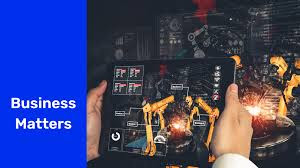The Power of Immersive Learning in Workforce Training**
**Unlocking Potential:
In the dynamic realm of professional development, the paradigm of learning is undergoing a profound transformation with the rise of immersive learning methodologies. Unlike traditional approaches, immersive learning captivates learners by plunging them into realistic virtual environments, leading to unparalleled engagement and skill acquisition.Immersive learning harnesses cutting-edge technologies like Virtual Reality (VR) and Augmented Reality (AR) to create experiential training experiences. VR immerses participants in digital worlds through specialized headsets, replicating real-life scenarios for skill enhancement. On the other hand, AR seamlessly blends digital content with the physical environment, enhancing learning through interactive overlays triggered by real-world objects or locations.
*A Shift in Learning Dynamics**
Gone are the days of passive learning through textbooks or online modules. Immersive learning places individuals at the heart of simulated experiences, fostering a sense of presence and active engagement. Learners not only observe but also interact with their virtual surroundings, facilitating deeper understanding and retention of knowledge.
**The Advantages of Immersive Learning**
The advantages of immersive learning are manifold. By simulating real-world scenarios, it enables learners to practice skills in a risk-free environment, boosting confidence and competence. Moreover, the interactivity of VR and AR fosters hands-on learning, making complex concepts more accessible and memorable.
**The Future of Workforce Training**
As immersive learning continues to evolve, it promises to revolutionize workforce training for years to come. Its ability to create impactful, personalized learning experiences transcends traditional boundaries, unlocking limitless possibilities for skill development and professional growth.
**1. Engagement and Retention**
Immersive learning captivates learners like never before. Its interactive and lifelike environments create a profound emotional connection, leading to heightened engagement and better retention of learning content. By providing hands-on experiences, immersive learning ensures that knowledge is not just absorbed but deeply understood and applied.
**2. Technical Skills Development**
The dynamic nature of immersive learning makes it a powerhouse for developing technical skills across diverse industries. For instance, in healthcare, professionals can hone their surgical techniques through virtual reality simulations, improving their proficiency and confidence in real-life scenarios. Similarly, manufacturing workers can master complex machinery operations in a risk-free virtual setting, reducing errors and enhancing productivity.
**3. Soft Skills Enhancement**
Beyond technical prowess, immersive learning plays a crucial role in nurturing soft skills such as communication, teamwork, and leadership. Virtual scenarios offer a safe space for learners to practice interpersonal interactions, fostering effective communication and collaboration without the pressures of real-world settings. This holistic approach to skill development ensures that professionals are well-rounded and equipped for success in diverse roles.
**4. Cost-Efficiency and Scalability**
While the initial investment in immersive learning technologies may seem substantial, the long-term benefits far outweigh the costs. Virtual environments and simulations can be reused multiple times, significantly reducing per-participant expenses. Moreover, the scalability of immersive learning allows organizations to reach a broader audience efficiently, ensuring that high-quality training is accessible to all without compromising on effectiveness.
In essence, immersive learning is reshaping the landscape of education and professional development, offering unparalleled opportunities for growth, skill enhancement, and success in today's dynamic world.
**1. Automotive Industry**
In the automotive sector, immersive learning powered by VR and AR is revolutionizing employee training. Through lifelike simulations, workers can immerse themselves in scenarios like vehicle assembly, repair, and maintenance, gaining hands-on experience in a virtual environment. AR-guided instructions further support employees as they perform tasks, enhancing efficiency and accuracy.
**2. Medical and Healthcare**
Healthcare professionals leverage immersive learning for emergency response training, where VR-driven simulations replicate realistic scenarios for care coordination and intervention prioritization. Additionally, AR applications provide interactive rehabilitation guides and tailored physical therapy programs for patients, enhancing engagement and outcomes.
**3. Utilities Sector**
VR simulations in the utilities industry recreate hazardous electrical scenarios, enabling workers to practice safe procedures for high-voltage equipment failures or arc flash incidents. AR overlays digital information onto physical infrastructure during pipeline inspection, improving accuracy and safety by providing real-time data and support.
The potential of immersive learning in workforce training is immense and promising. As technology evolves, the integration of VR and AR into training programs will become commonplace, offering a dynamic and engaging learning experience. Organizations embracing immersive learning foster a culture of continuous development, equipping their workforce with the skills needed to thrive in a competitive environment. Immersive learning is not just a trend; it's a game-changing force shaping the future of professional growth and success.





















